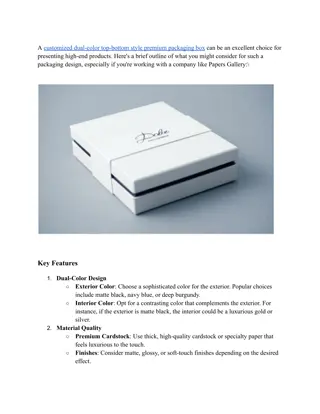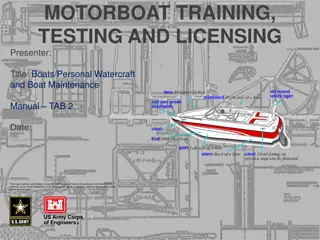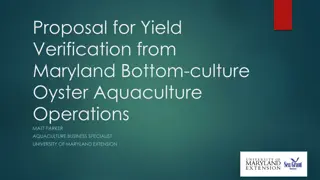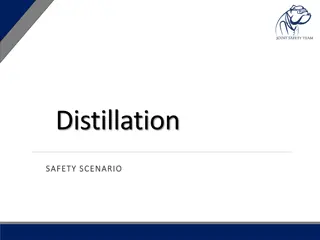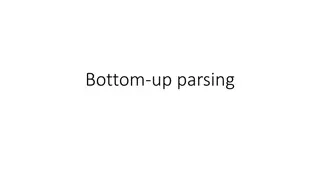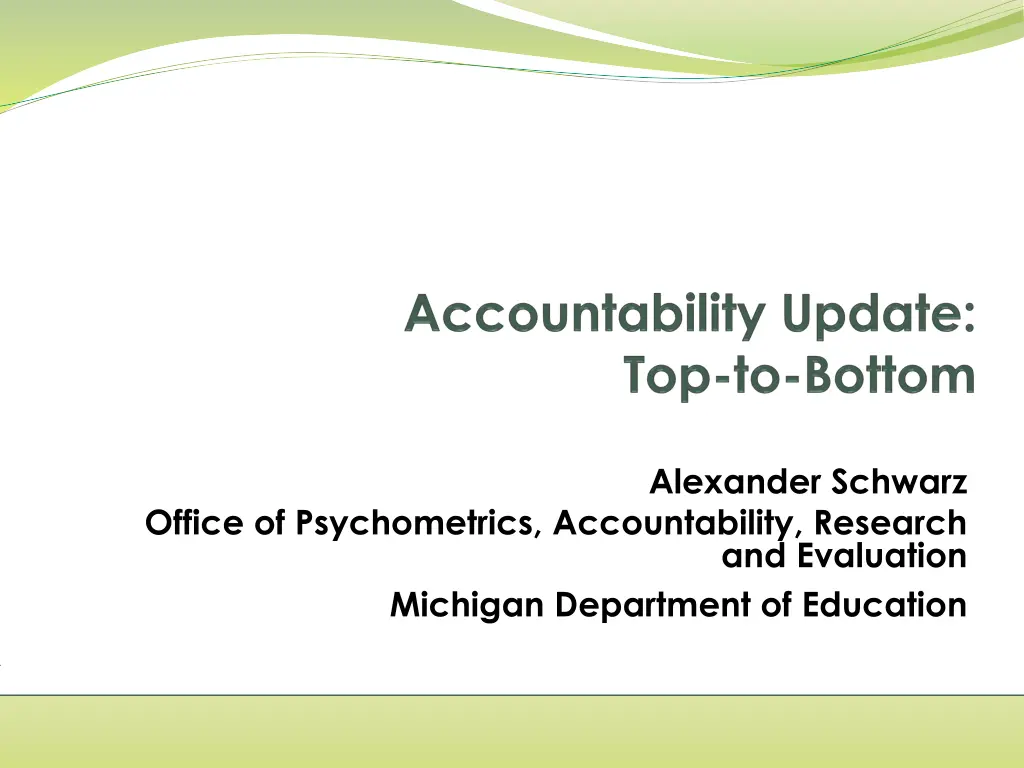
Understanding Michigan's Top-to-Bottom School Ranking System
Explore Michigan's Top-to-Bottom ranking system used by the Department of Education for school accountability, measuring achievement, improvement, and graduation rates. Learn about the components, criteria for ranking schools, and considerations for reconfigured schools.
Download Presentation

Please find below an Image/Link to download the presentation.
The content on the website is provided AS IS for your information and personal use only. It may not be sold, licensed, or shared on other websites without obtaining consent from the author. If you encounter any issues during the download, it is possible that the publisher has removed the file from their server.
You are allowed to download the files provided on this website for personal or commercial use, subject to the condition that they are used lawfully. All files are the property of their respective owners.
The content on the website is provided AS IS for your information and personal use only. It may not be sold, licensed, or shared on other websites without obtaining consent from the author.
E N D
Presentation Transcript
Alexander Schwarz Office of Psychometrics, Accountability, Research and Evaluation Michigan Department of Education
Top-to-Bottom (TTB) List Used as measure of accountability U.S. Department of Education Schools ranked from 99 to 0 on student performance Schools held accountable: Achievement Improvement Achievement Gap Graduation (high schools only)
Top-to-Bottom Ranking Reward: highest performing, greatest progress, Beating-the-Odds (BTO) schools Focus: largest achievement gaps Priority: lowest performing schools
Top-to-Bottom Changes in 2013 Highest four, five, or six year graduation rate used z-score values are capped to -2 and +2 Scorecard performance impacts Top-To-Bottom Priority and Focus categories
Components of TTB Each component applies to each subject for a school: Achievement Improvement in achievement over time Achievement gap measure between top scoring 30% of students versus the bottom scoring 30% of students Individual components tell schools something about their overall performance and can be used for diagnostic purposes
Which schools receive a ranking? Schools with 30 or more full academic year (FAY) students in the two most recent years in at least two state-tested content areas Some schools do not receive a ranking if they: Have too few FAY students Only have one year of data Have a grade span that does not include two tested areas
Grade Span Difference For Mathematics and Reading in grades 3-8, testing every year allows us to calculate improvement in achievement based upon individual student performance level change All other subjects and grades use a slope calculation based upon cohorts of students
What about reconfigured Schools? A school must change by four or more grades in order to get a new code Example: A K-2 building becoming a K-6 building New codes are NOT granted when a school is reopened as a charter, for example If not, the school retains the old code and continues to have data point to it from all students for whom that code is their feeder school
Why do we use z-scores? z-scores are a standardized measure that help compare individual student (or school) data to the state average data (average scores across populations) z-scores level the playing field across grade levels and subjects Each z-score corresponds to a value in a normal distribution. A z-score will describe how much a value deviates from the mean z-scores are used throughout the ranking to compare a school s value on a certain component to the average value across all schools
z-Score Cheat Sheet Student z-score = (Student Scale Score) (Statewide average of scale scores) Standard Deviation of Scale Score School z-score= (School Value) (Statewide average of that value) Standard deviation of that value z-score Summary PowerPoint and Business Rules- http://www.michigan.gov/mde/0,4615,7-140-37818_56562---,00.html
Modifications to 2012-2013 Top-to-Bottom Based upon feedback from the field Concern with outliers having an inordinate impact on the identification of focus schools Modified all student level scores Normalize all student z-score distributions Cap all student z-score distributions at -2 on the lower end and at +2 on the upper end
2012-2013 Focus School Status Prohibit from appearing on the focus list any schools as defined by both of the following: The school s bottom 30% group proficiency rate is higher than the state average proficiency rate in at least two subject areas The school s top to bottom percentile rank is at least 75
Good-Getting-Great Applied in 2012-2013 Accountability Cycle Prohibit from appearing on the focus list any schools as defined by both of the following: The school s bottom 30% group meets the safe-harbor requirement in all applicable subject areas as determined in the Accountability Scorecard The school s top to bottom percentile rank is at least 75
Overview of Ranking Results 2798 Schools ranked 137 Priority Schools 52 new schools 85 first designated as Priority in previous cohorts 349 Focus Schools 342 Reward Schools
Characteristics of Priority Schools High schools not more likely to be Priority Schools E/MS schools make up a higher proportion now Percent of students in school who are LEP no strong relationship with Priority Status Percent of students SWD related to Priority Status (as % SWD increases, so does number of Priority Schools) Very strongly related to economic disadvantage 73% of our Priority Schools in the 2013 cohort are high economic disadvantage (over 75% of students ED) compared with 18% of the state Also strong relationship between % minority students and Priority status; not as strong as ED Urban schools overrepresented; rural schools underrepresented
Characteristics of Focus Schools 185 schools were Focus in 2012 and 2013 164 are new to Focus in 2013 173 came off the list 8 became Priority 125 have no label 37 are Reward 3 are not ranked
Focus 2013 relative Focus 2012 More schoolwide Title I schools identified More rural schools, fewer urban schools, more small and large schools, fewer 400-800 student schools Fewer low ED schools, more 50-75% ED schools
Resources Available Complete TTB list of all schools and their ranking At-A-Glance Document Individual school look-up to see your school s results Business rules by which the rankings were calculated Complete data file and validation file Links to separate pages for each of Priority, Focus and Reward schools You can access these resources at www.mi.gov/ttb
Resources Available Separate pages for each of Priority, Focus and Reward schools At-A-Glance Documents Powerpoints for understanding each status Overview presentations with voice over Documentation for supports Look-up Tools You can access these resources at www.mi.gov/priorityschools www.michigan.gov/focusschools www.michigan.gov/rewardschools
Additional Assistance You can also request individual assistance by calling the Office of Evaluation, Strategic Research and Accountability (OESRA) at 877-560-8378, Option 6 or emailing mde-accountability@michigan.gov


